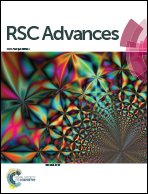Typical and atypical domain combinations in human protein kinases: functions, disease causing mutations and conservation in other primates
Abstract
Ser/Thr and Tyr protein kinases orchestrate many signalling pathways and hence loss in this balance leads to many disease phenotypes. Due to their high abundance, diversity and importance, efforts have been made in the past to classify kinases and annotate their functions at both gross and fine levels. These kinases are conventionally classified into subfamilies based on the sequences of catalytic domains. Usually the domain architecture of a full-length kinase is consistent with the subfamily classification made based on the sequence of kinase domain. Important contributions of modular domains to the overall function of the kinase are well known. Recently occurrence of two kinds of outlier kinases-“Hybrid” and “Rogue” has been reported. These show considerable deviations in their domain architectures from the typical domain architecture known for the classical kinase subfamilies. This article provides an overview of the different subfamilies of human kinases and the role of non-kinase domains in functions and diseases. Importantly this article provides analysis of hybrid and rogue kinases encoded in the human genome and highlights their conservation in closely related primate species. These kinases are examples of elegant rewiring to bring about subtle functional differences compared to canonical variants.


 Please wait while we load your content...
Please wait while we load your content...